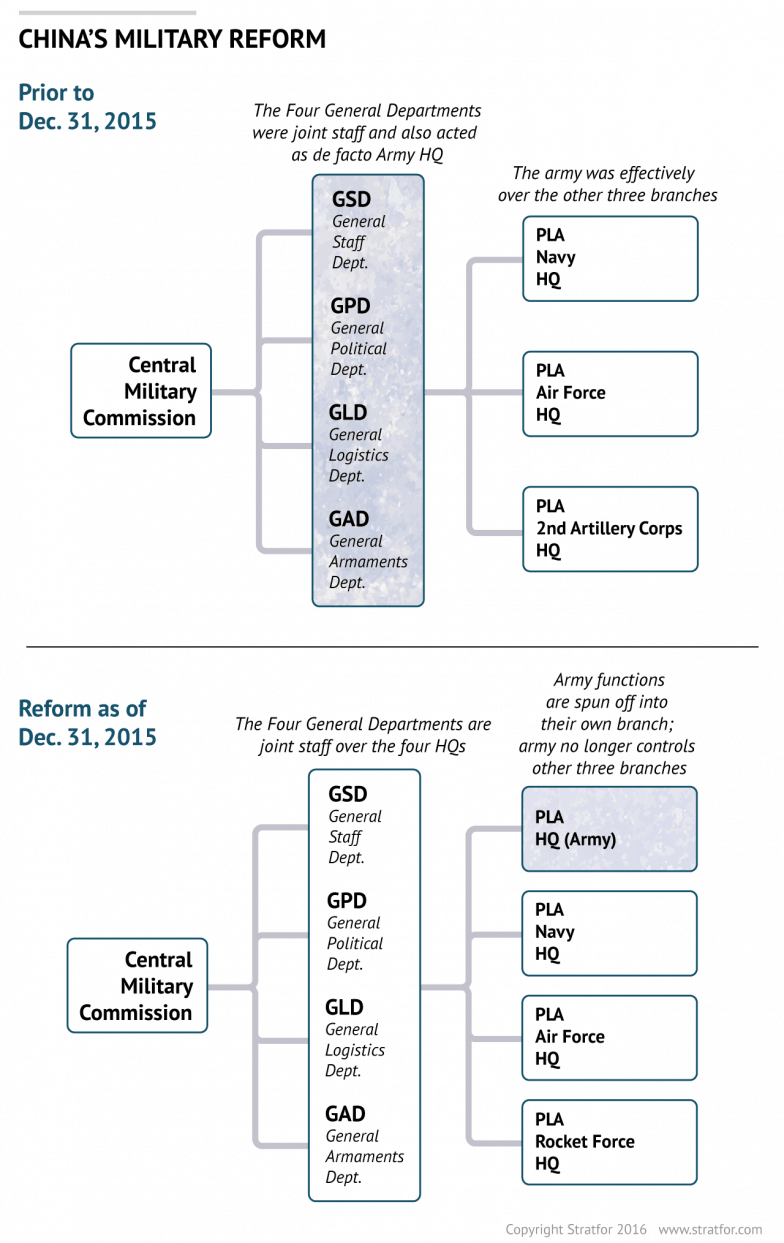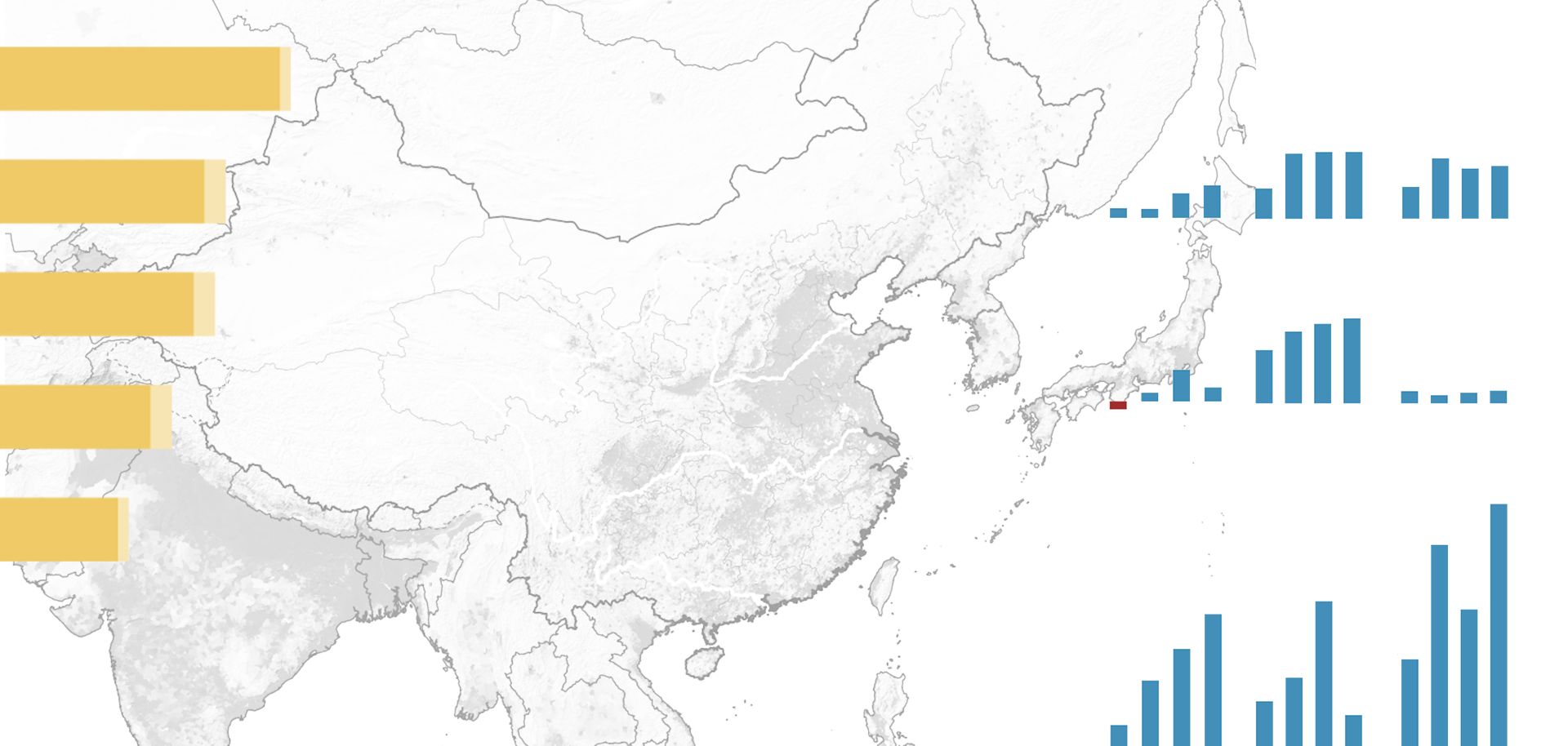
At the tail end of 2015, Beijing introduced the ambitious first wave of Chinese President Xi Jinping's comprehensive plan for military reform. The changes — which include an organization called the Strategic Support Force, a more powerful strategic weaponry command and a new ground force headquarters— are the culmination of a decadelong effort to improve the People's Liberation Army (PLA). The focus is on military capability and overcoming the deep-rooted political intransigence that has stymied the development of China's armed forces.
As of Dec. 31, 2015, China's ground forces had never had their own headquarters. The establishment of an army headquarters will improve the Four General Departments' ability to serve as a joint staff and also help equalize the standing of the four branches of the PLA. This is a key prerequisite to developing the ability to conduct joint operations — necessary to prevail in modern warfare — and crafting a capable military that can operate far from the security of mainland China.
Second, what had been the Second Artillery Corps and in command of China's nuclear and conventional strategic missiles, was reorganized as the PLA Rocket Force. It received an upgrade in organizational standing, from an "independent arm" to a full service, on par with the navy and air force — and for the first time, the army.
The People's Liberation Army's Strategic Support Force is the next new structure. Details are sparse at the moment, leading even Chinese state media to speculate, but this force has been rather blandly described by Chinese Ministry of Defense spokesman Yang Yujun as a combination of all support forces "with strong strategic, fundamental and supportive importance." However, the appointment of a Second Artillery Corps general with a technical background as the new force's commander supports the notion that this is not simply a logistics organization, as its name would suggest, but a group responsible for high-tech operations.
Although the Dec. 31 reforms are impressive, the changes made so far have focused mostly on the highest levels of command. Much work remains to be done at the lower echelons of the military. The People's Liberation Army reportedly plans to consolidate the functions of the Four General Departments into a single Joint Staff Department. If this is the case, the amalgamation of the military regions and their staffs will likely be implemented in the year ahead.



